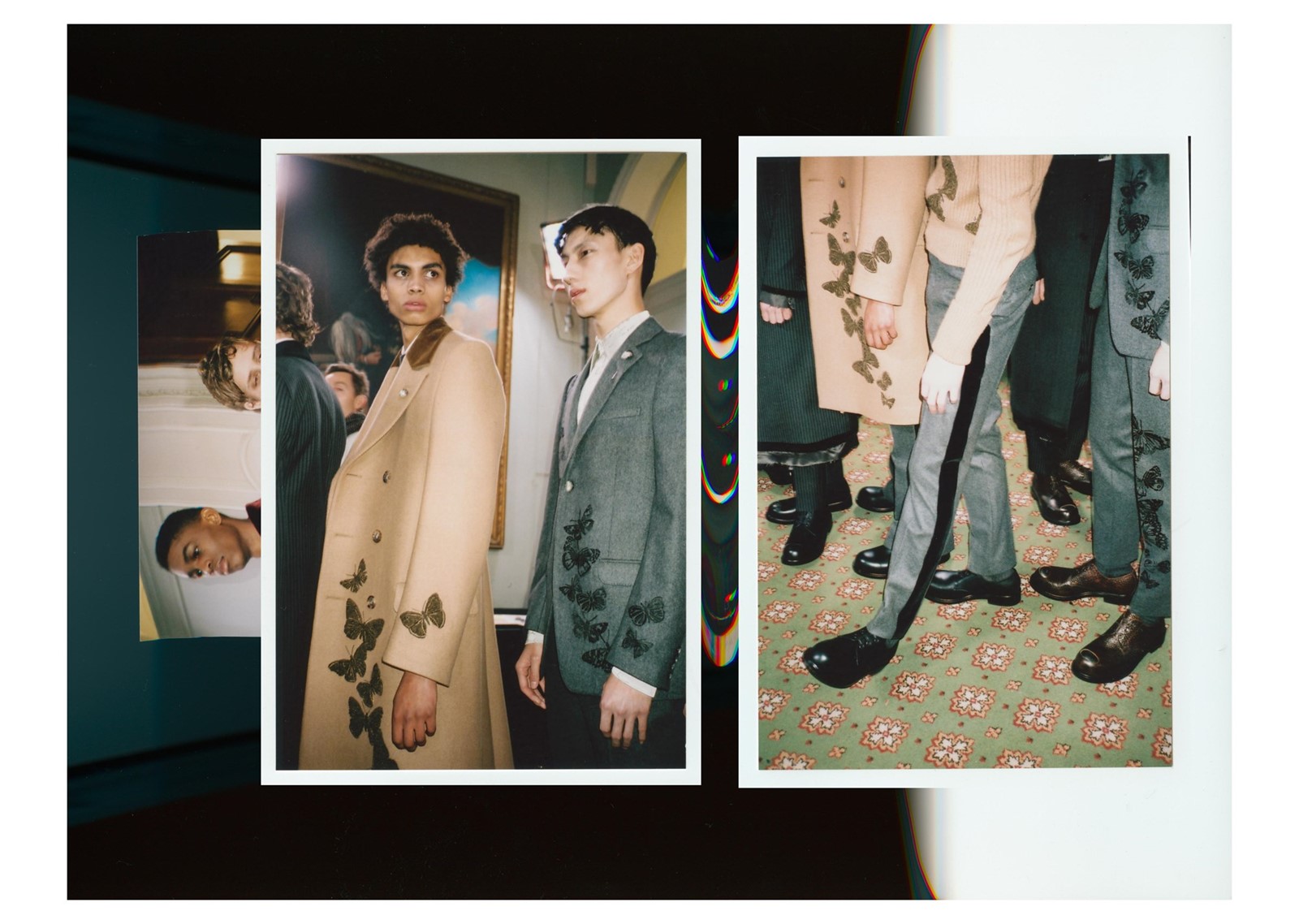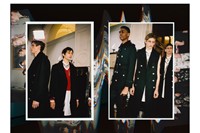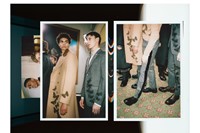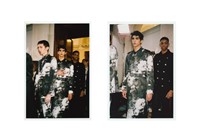Sarah Burton was thinking about "obsessive collectors" for her Autumn/Winter 2016 men’s collection for Alexander McQueen, she said, about Sir John Soane, Charles Darwin and the search for rare plant and animal specimens, precious trinkets and lucky charms. Shown at the Foreign Office, this was a typically romantic and discreetly mournful starting point. Victorian dress – elongated and deconstructed – was the principle inspiration as far as silhouette was concerned. And more than ever before, that period saw a world open to the dreams and possibilities of travel.
Burton is now in her sixth year as creative director of Alexander McQueen and, if her women’s ready-to-wear collection, shown in Paris in October, represented something of a departure it also – maybe paradoxically – saw her looking more closely still at her mentor’s legacy, but with the confidence to interpret it in her very particular way. This latest offering did that too, incorporating many of Lee Alexander McQueen’s favourite things, if you will. "Although it’s a departure, it’s actually very McQueen," Burton confirms. Time-honoured signatures were infused with fresh new life. There was a heartfelt softness, sensitivity and sense of reality through a certain loosening of codes. Attention to detail might not unreasonably be described as forensic: obsessive collecting indeed.
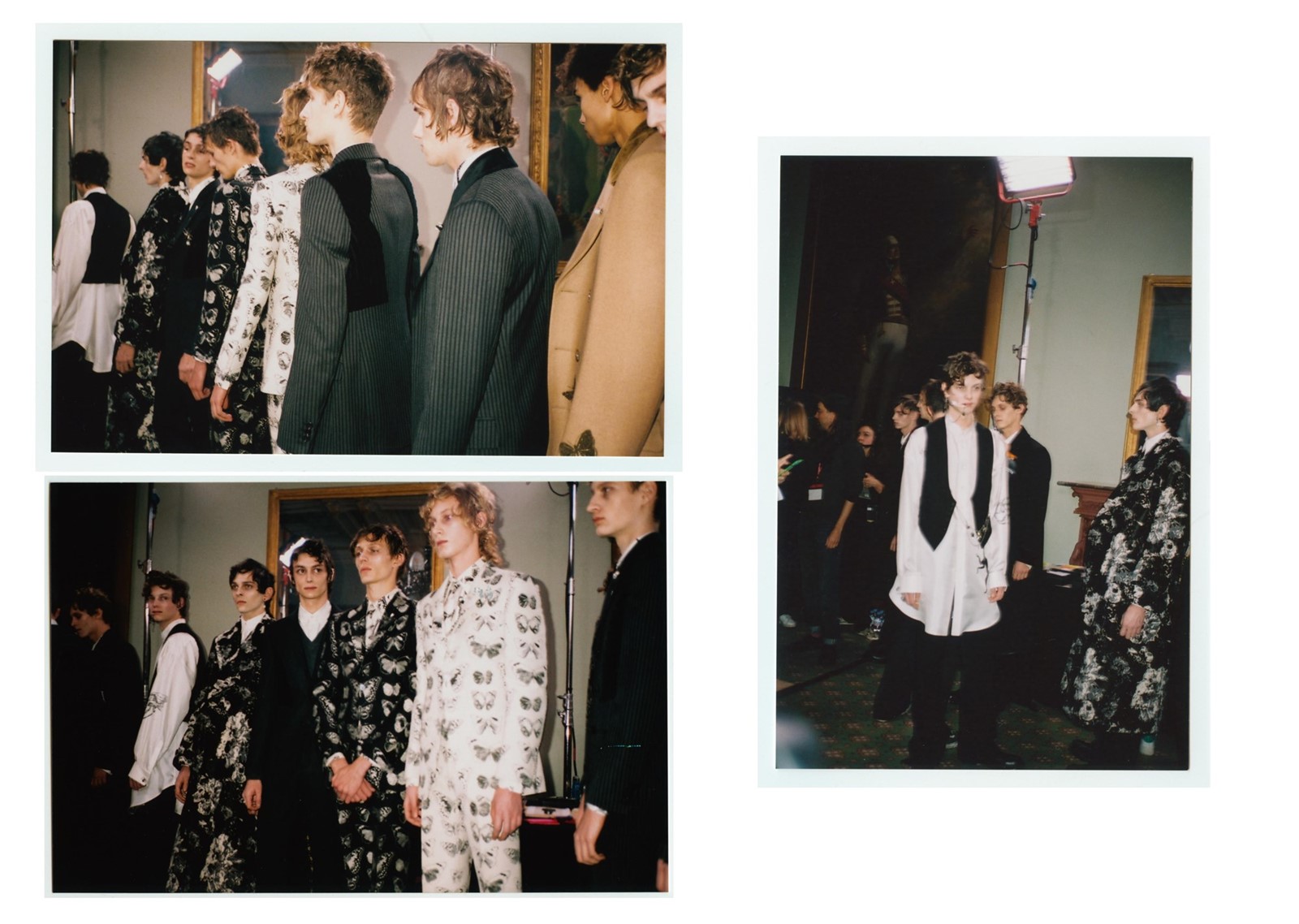
Genus Sartorius
Alexander McQueen famously trained on Savile Row – at Gieves & Hawkes and Anderson & Sheppard. As an apprentice at the latter, he learned, specifically, to cut jackets – including working on a coat for the Prince of Wales. Rumours (founded by McQueen himself) that he scrawled obscenities into the linings of his royal client’s clothing have since unsurprisingly been dismissed by the powers that be. But whatever the case may or may not have been, the coats in this collection were some of the most beautiful pieces: perfectly proportioned and realised coats with sleeves and hems unceremoniously hacked off were edged with raw-cut lining silk, or velvet trailing loose threads; a camel Crombie appliquéd with gold bullion butterflies was not entirely dissimilar to one Lee McQueen used to wear; hunting red tail coats densely embroidered with black jet beading were reminiscent of both very early Alexander McQueen and Givenchy during his tenure at the French house.
The British tailoring tradition has always informed McQueen, and fabrics throughout were classically indebted to that: morning stripe, pinstripe, herringbone, flannel, felt, cavalry twill… "The silhouettes are very McQueen too," Burton says. "It’s almost like a return to great pieces of men’s clothing." And so it was, but: "There’s a dark wave going through to keep it contemporary," says Alister Mackie, creative director of Another Man and long-time Alexander McQueen collaborator: he styled both men’s and women’s shows for the house in the noughties and was back to work on this one. "There’s an underground punky feeling to the boys – the Victorian collector done in a Nick Cave kind of way." That feeling was only added to by accessories: metal toe-capped shoes, boots and belt buckles, silver chain harnessing, tooth, spider and onyx chokers and earrings and a particularly vicious silver safety pin mouthpiece inspired, neatly enough, by Sid Vicious’s own.
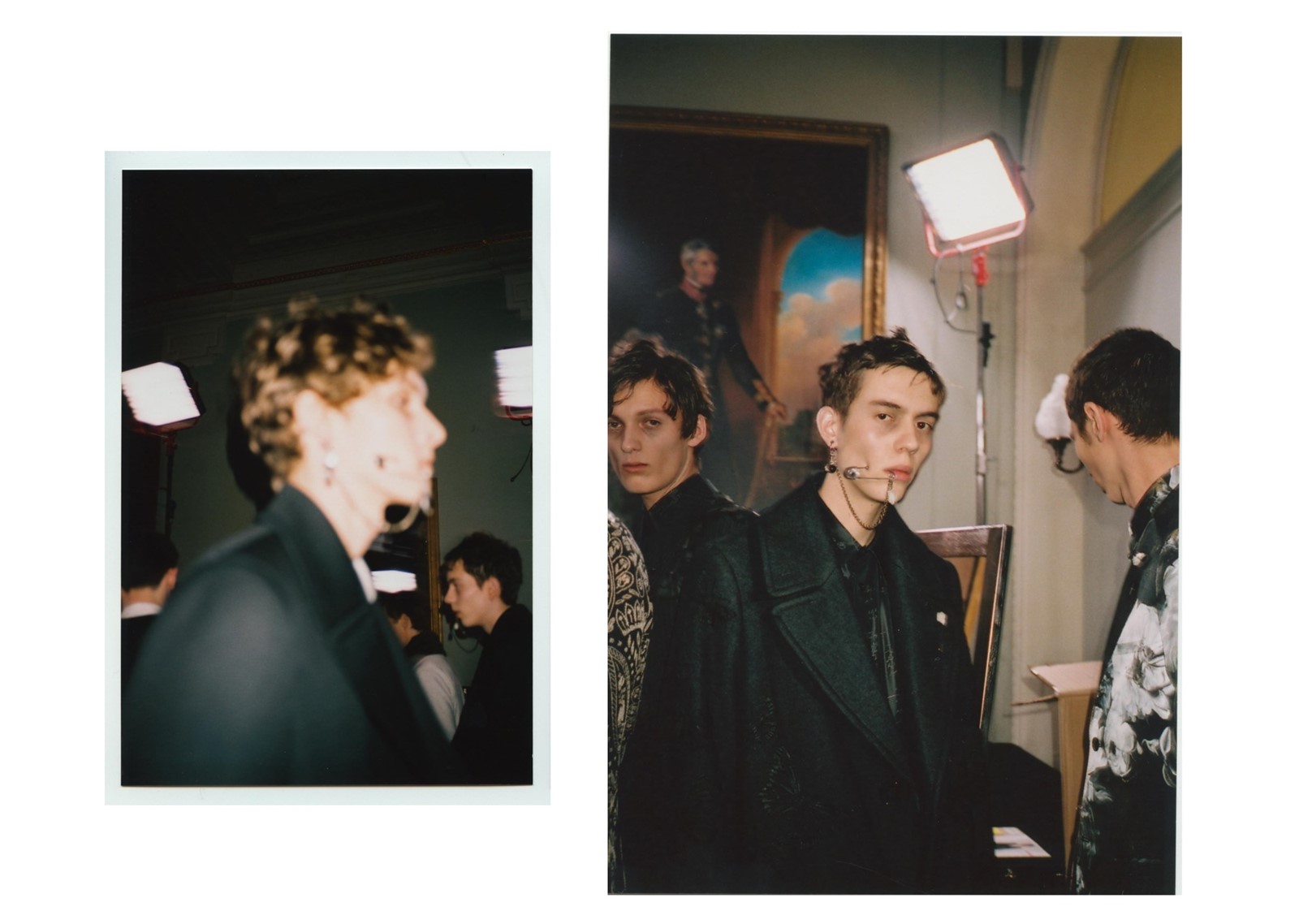
Genus Feminam
The McQueen woman, as we all know, is in love with surface embellishment – and so too is Sarah Burton, although that has not been as evident in her men’s collections until now. Such a focus on the creation of ever more precious embroideries, jacquards and prints is indebted to the French haute couture tradition. McQueen was creative director of the house of Givenchy from 1996 for four-and-a-half years, and always said that he learned much from the petites mains that staffed its ateliers. The more hand-worked pieces are today predominantly created in the McQueen Clerkenwell studio, making Alexander McQueen one of very few British fashion names to operate in this way.
That many of the house’s signatures reference the natural world is similarly integral. And so, here were monkeys, bats and – most prominent – butterflies and death moths. La Poupée, McQueen’s Spring/Summer 1997 collection, featured a model walking on water with her head wrapped in white net swarming with live butterflies, for Spring/Summer 2001’s Voss McQueen recreated Joel-Peter Witkin’s Sanatorium for a finale during which a frosted glass case shattered to reveal writer Michelle Olley reclining naked and covered in fluttering moths.
"They’re almost like specimen jackets," says Burton of a silk jacquard design woven with Victorian illustrations of the very same winged creatures which also appeared in butterfly lace tops. A Paisley motif evident throughout owed more to the spirit of the seventies – so too did references to Seditionaries and sex. The aforementioned trinkets and charms were studded over neat, double-breasted jackets, worn away crystal decorated the shoulders of a classic Aran knit sweater, the upper part of overcoats came sparkling with silver sequinned swirls. As for print… Consider Darwinian illustrations of snakes, skeletons and fossils across oversized ivory silk shirts. One of these went so far as to feature a page from Darwin’s sketchbook. "There are some spectacular embellishments," Mackie says, "but done in a casual way". Any opulence, however gorgeous, was eased in a throw it on and forget about it spirit. The luxury of not caring.
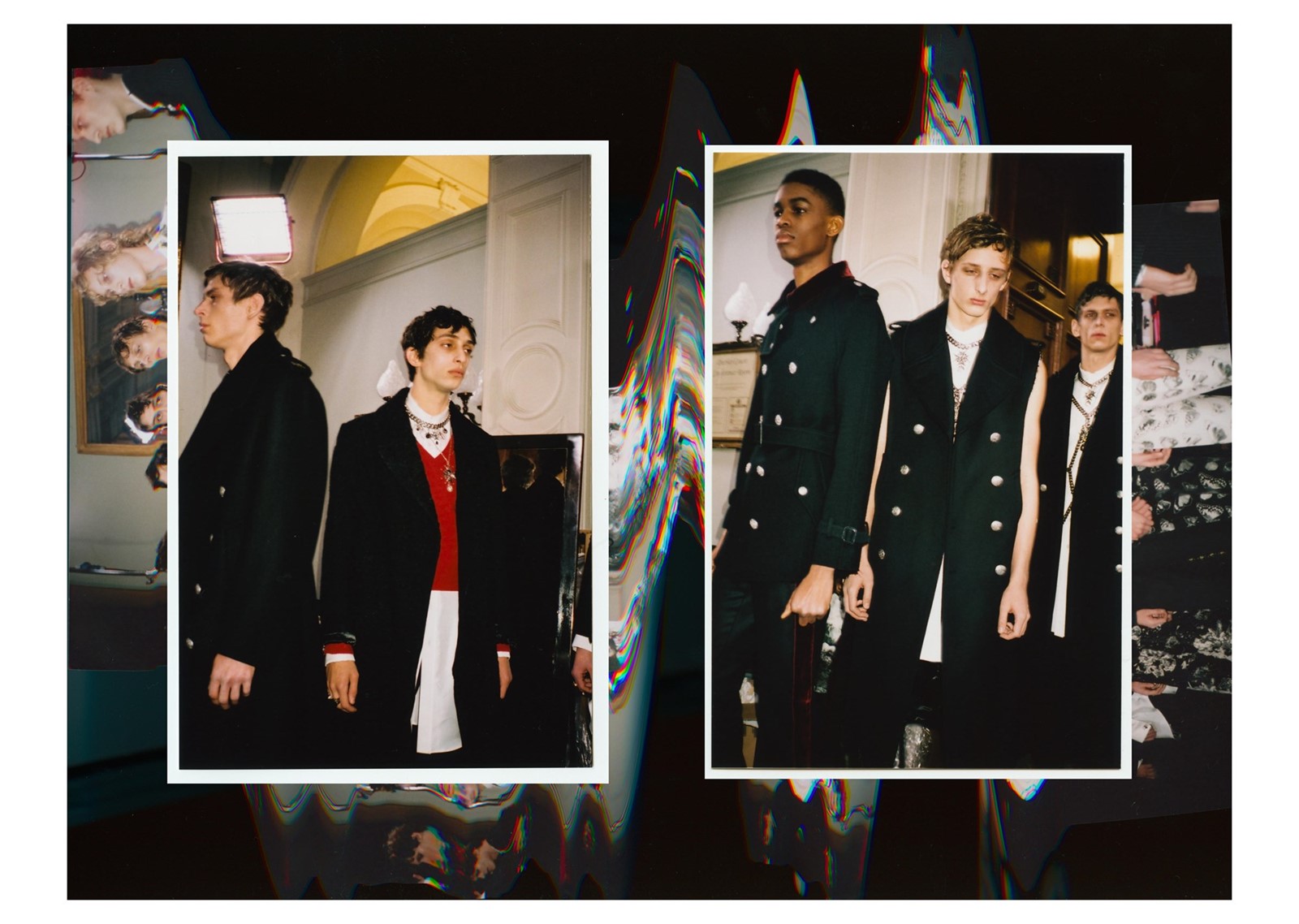
Genus Militum
Savile Row is also purveyor of military and ceremonial dress, and this too has always featured at Alexander McQueen. In this instance, gold bullion butterflies appliquéd onto camel coats and epaulettes, velvet military stripes on tailored trousers and raw-cut silk that echoed the linings of military tunics but cut into suits were all part of the story. Then there were military buttons, frogging, braiding, Maltese Cross rings and pendants… In much the same way as there was a play between conservatism and subversion – between ceremony and irreverence in the deconstruction of classic garments including, most prominently, military greatcoats – the masculinity of distressed leather army boots was undercut by flowers, taken from a Dutch sixteenth century painting, which were lovingly hand-painted onto their polished surface. "It’s about the codes of McQueen menswear," Mackie concludes. "And the idea of life as a journey," says Burton. "We looked at what we’ve done and made it relevant for now."
